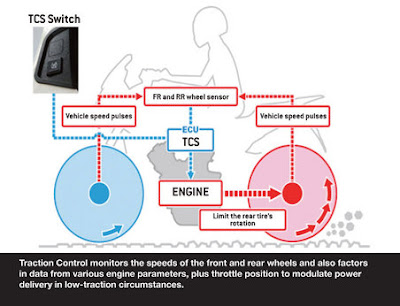The tread of a tire or track refers to the rubber on its circumference that makes contact with the road or the ground. As tires are used, the tread is worn off, limiting its effectiveness in providing traction. A worn tire can often be retreaded.
The grooves in the tire are correctly called the tread pattern, or simply the pattern, but the word tread is often used casually to refer to the pattern of grooves molded into the rubber.
But why do tires have treads anyway? Why aren’t the tires on our vehicles bald with no treads like those on race cars?
The reason our tires look different from those outfitted to race cars, is because we drive for different reasons. Race car drivers require a smooth tread on their tires because it provides more grip during dry conditions. If dry conditions are not present, then they may switch to tires with treads.
Since the rest of us do not use our vehicles for racing, we frequently drive through adverse conditions, like rain, snow and mud. Since water accumulates on the road during these wet conditions, our tires need treads for better traction in these harsh conditions that we so often drive through.
The grooves that you see on your tires work to siphon water away from the tires when the roadway is wet. This can help to reduce the risk of hydroplaning when traveling at higher speeds on a wet road or highway. If the treads on the tire are not at the proper depth, it can become difficult for enough water to be carried out from beneath the tire, thus increasing the possibility that you could lose control in such conditions.
When a vehicle is traveling too fast, or the tire treads are not able to channel enough water out from beneath the tire, it can result in hydroplaning. This is where your vehicle loses contact with the road and skims across a thin layer of water instead, causing a loss of control.
That is why monitoring your tires tread depth is critical to vehicle performance and safety.























